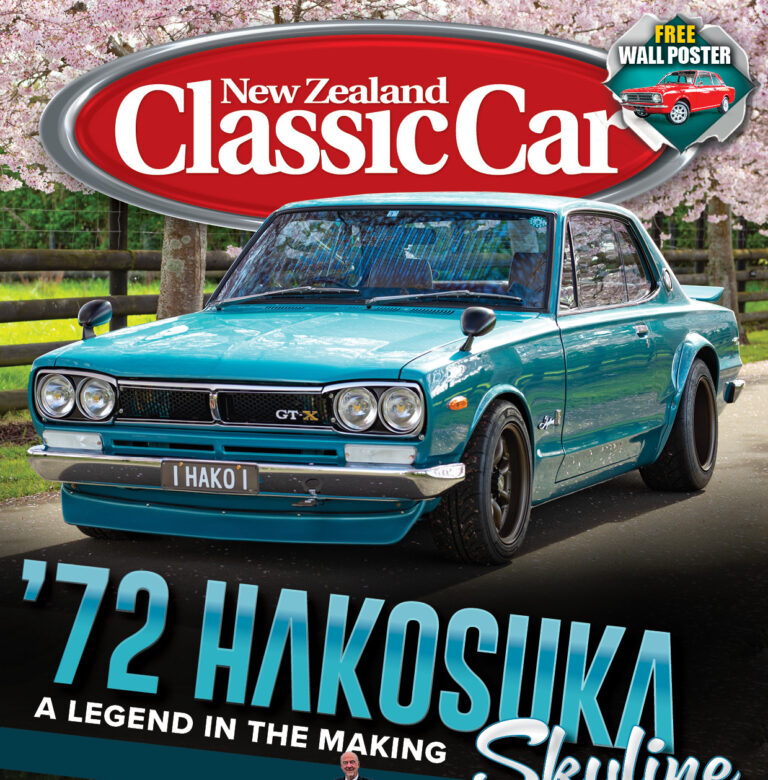It should be no surprise that one of Mercedes’ best-selling and longest-running models should wind up as a taxi in Gisborne, but it’s not your first thought when you look at this car
By Ian Parkes, photography Stephen Perry
The idea of running a Mercedes as a taxi has always seemed a bit incongruous here in New Zealand, where much more mundane but long-legged Holdens and Falcons did the bulk of the work — while they were in production, anyway.
Here, Mercedes were almost always the preserve of the executive class — exotic, expensive, and pampered, as any repairs would come with a hefty price tag.
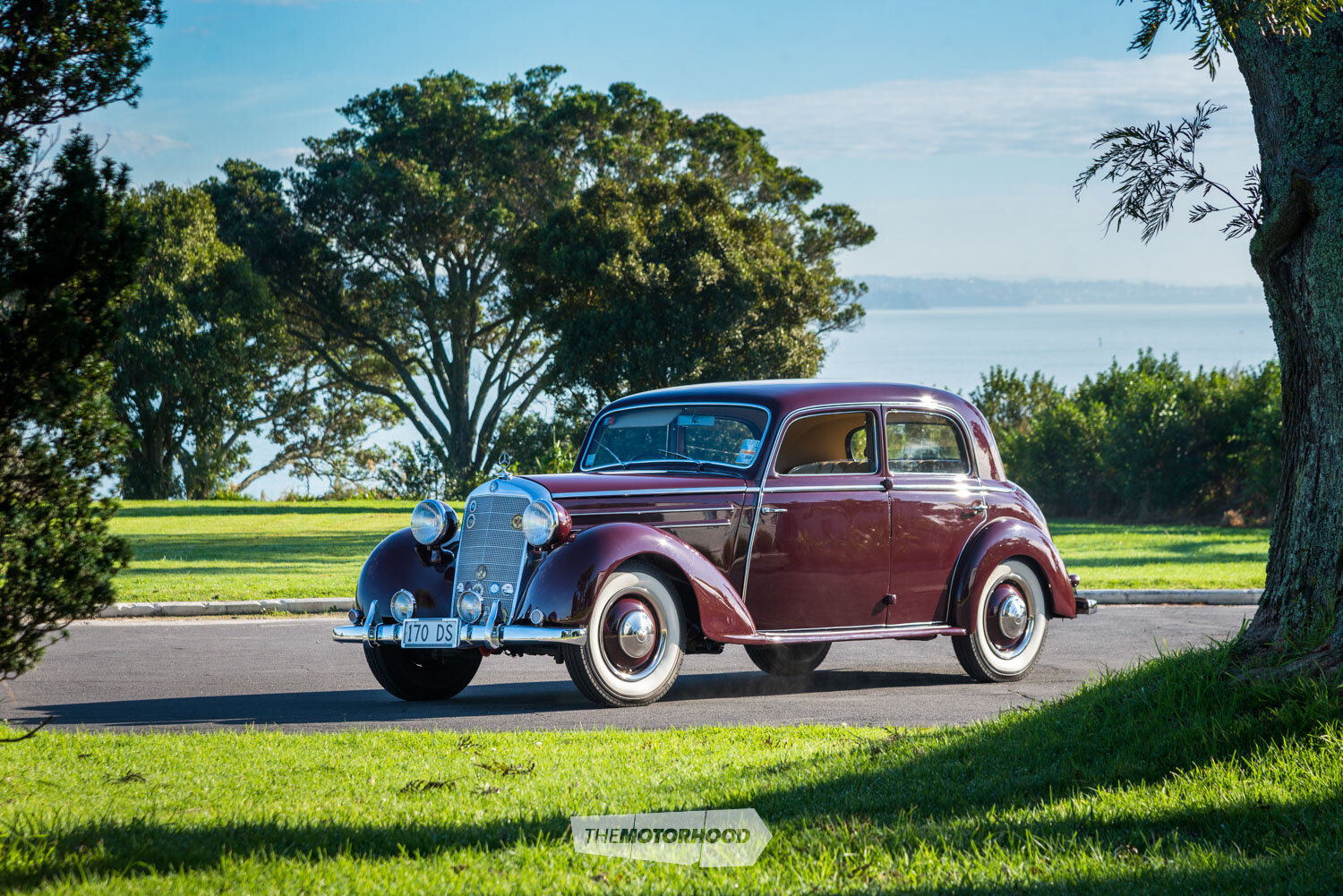
Of course, in markets closer to Germany, Mercs weren’t as dear to fix and the extra cost was offset anyway by the car’s durable construction. The brand’s MB Tex vinyl upholstery, for example, would last twice as long as leather or fabric alternatives. The car’s metal was thicker than rivals’, the moving parts were the product of careful development and, until the ’90s anyway, the whole car was built to last.
In places where a mechanical indifference to gruelling conditions is even more important, as in much of Africa, Mercedes durability made them even more popular as workhorses.They were highly prized as taxis where, once acquired, it could literally be expected to last a lifetime.

Bread and butter
Not only was the Mercedes 170 (W136) one of the cars that helped build that reputation for Mercedes, its production lasted almost half a lifetime spanning 1936 to 1953. These days, it seems Mercedes Benz have always been at the top of the tree since the very start.
The first-ever German registration plate, No 1, and the first driver’s licence were issued to the owner of the car named after Gottlieb Daimler’s daughter, Mercedes.
While the firm built many imposing cars between the wars, like most of Germany’s economy it was in a parlous state at the end of World War II. Daimler Benz did have one crucial advantage over their rivals, though. While other car makers could not get bodies or steel from factories that had fallen into Soviet hands in either East Germany or East Berlin, Daimler Benz’s factory in Stuttgart, while heavily damaged, was still free. Production on the pre-war 170 chassis resumed in 1946, but that year’s output of just a few hundred vehicles was all light trucks or ambulances.
The 1.7-litre four-cylinder side-valve–powered 170V was lauded on its introduction in 1936. The 28kW (37hp) 170V was Germany’s top-selling car for three years to 1939. It was available in two- and four-door models, soft-tops, and cabrios. A decade later, production was back up to over 10,000 cars per year, but this was still just half the pre-war level. Only the four-door was being made, and it was virtually identical to the car built from 1936 to 1942.
This was also the year the 170D was introduced, featuring a very economical 28kW (37hp) diesel engine — ideal for post-war austerity Europe. This 1.8-litre OM636 IV engine developed 20kW or 38hp at 3200rpm.
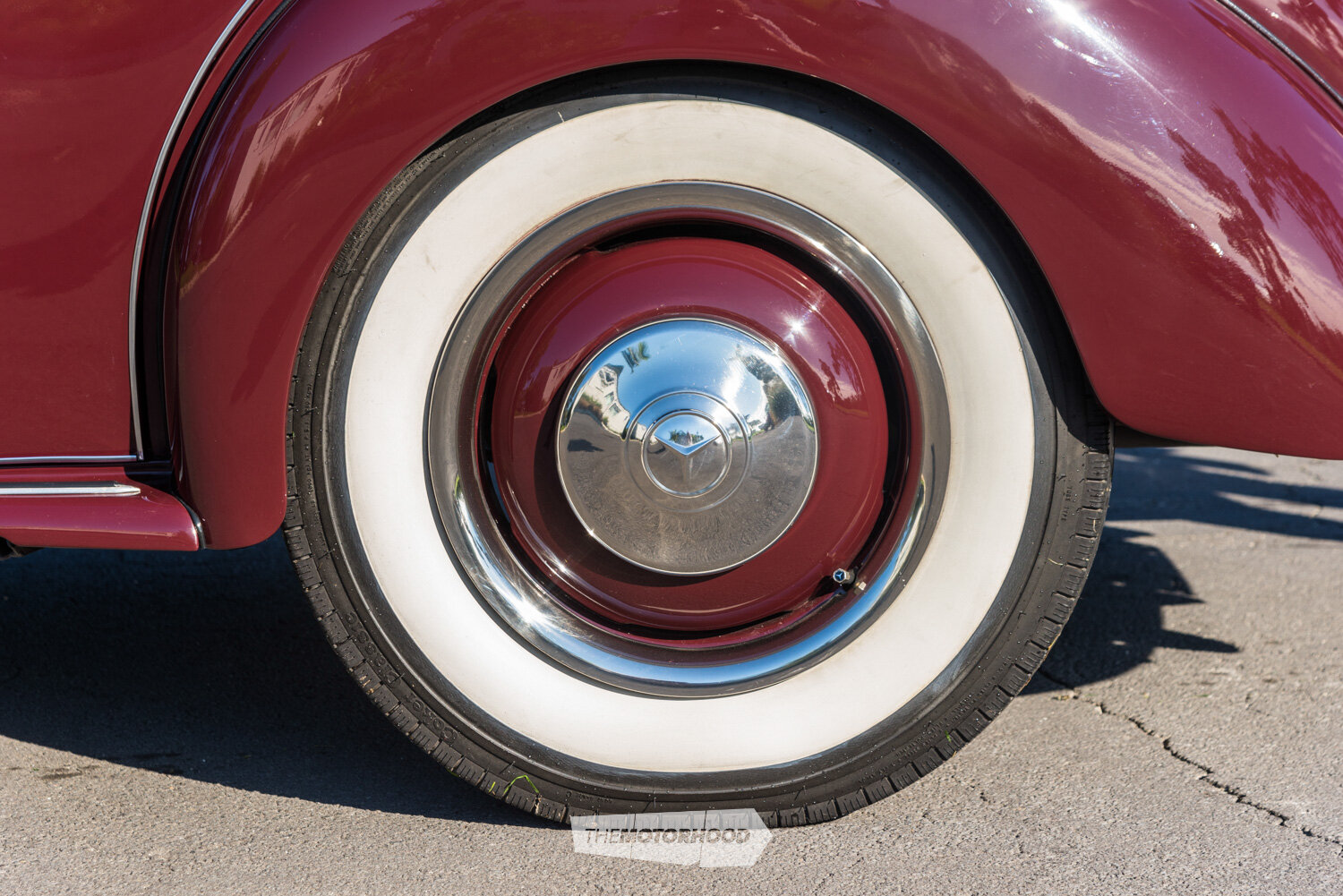

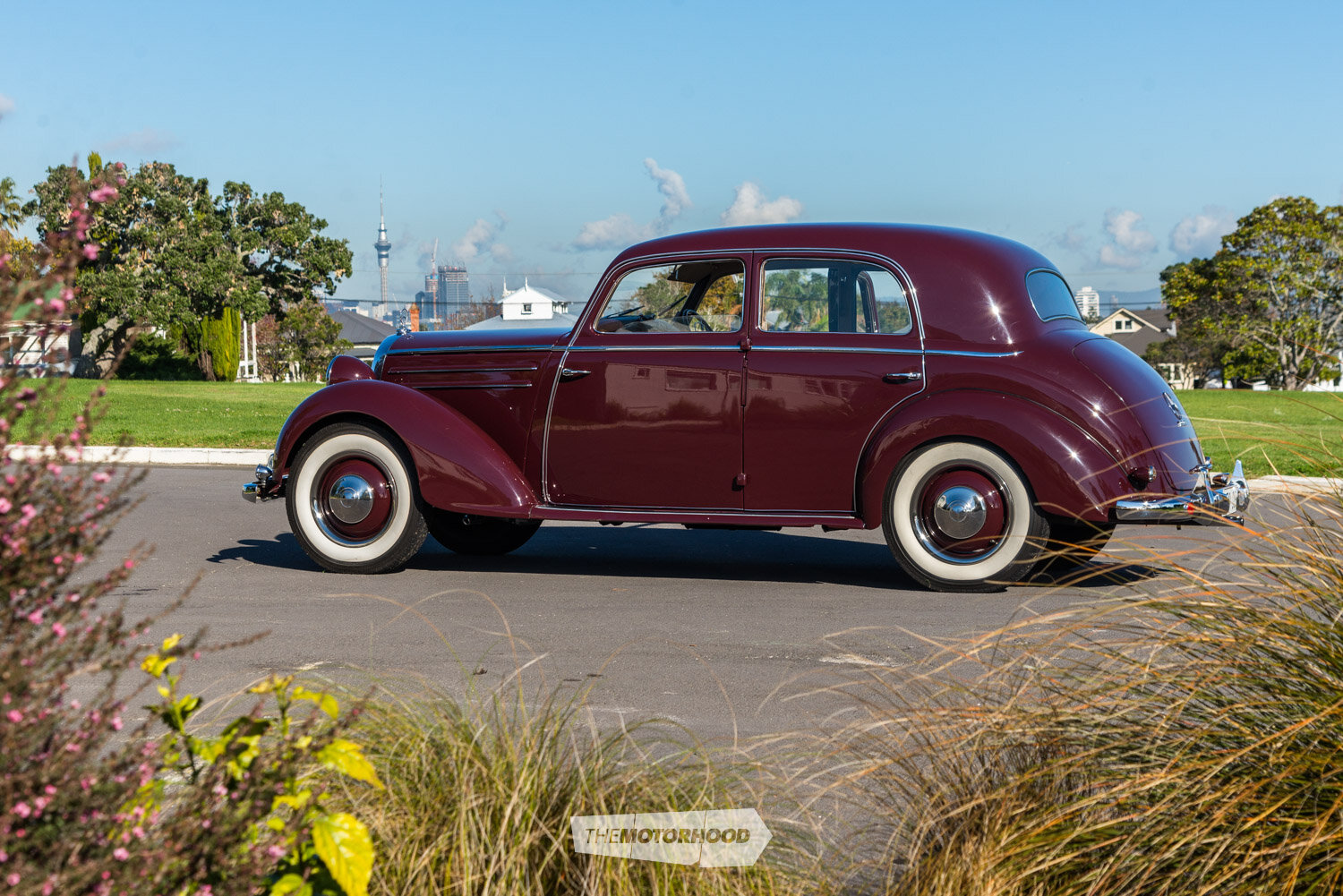

Revolutionary diesel
It was only the world’s third diesel-engined car and the first since World War II. The first was Benz’s own W138 in 1936 which was quickly adopted by taxi operators. The car had a top speed of around 100kph but, more importantly, it would use just 9.5 litres per 100km, compared with 13 litres of petrol in the petrol car. As diesel was less than two-thirds the price of petrol, it was a no-brainer for taxi companies. The owner of this exceptionally tidy 170 DS, Harry Pilapitaya, says the taxi companies also probably appreciated the ‘one-shot’ lubrication system, operated by a pedal inside the cab, which shot gear oil at all the necessary lubrication points like kingpins, ball joints, and wishbone pins.
From 1949 to 1953, 34,000 170Ds were built, including chassis-only and half-tonne panel vans. Harry says the engine, derived from a revolutionary pre-war six-cylinder truck engine, was used in almost everything: in the four-wheel–drive Unimog military truck, there was a marine-engine version, and it was also sold as a stationary engine for pumps and generators.
Harry, who also collects military vehicles — a Unimog is not among them yet — says the Unimog’s engine was fitted with a governor so anybody could drive it. There was no way the army wanted careless recruits over-revving their vehicles and blowing them up, so the governor kicked in and no matter how hard they tried they could not get over about 60kph.
Enter the S-class
It’s worth noting that at this time Mercedes did not have a luxury car, so it introduced the petrol-powered 170 S, the W191, in 1949. It was slightly larger and fitted with more luxury appointments. Some people argue this makes this car the first S-class. It was upgraded in 1952, when the floor-mounted gear lever was moved onto the steering column, it got a starter button on the dashboard, a better heater and some engine mods, a new diff and a wider rear track for better handling. The track front and rear was previously the same. The diesel engine was fitted to this car too, creating the 170 DS which is the subject of our story.
While the economy of the engine was much appreciated, they were still lumpy compared to petrol engines, and that didn’t yet square with the image of a luxury car, so, once again, the cars became firm favourites with taxi operators. That’s why three of them were imported new in 1954 into Auckland, to operate as taxis. After more than a decade plying their trade in the big smoke, they were bought by a taxi operator in Gisborne in the ’70s.
They ran around town happily there for another 20 years but had been off the road for three before a truck restorer from Hawke’s Bay by the name of Alan James bought them in 1989. He registered this car (previously BY8747) and drove it home to Waipukurau the next day. He sold the other two cars and restored this one, selling it at auction in 1990 to Auckland Mercedes club member Harold Decker.
Saved from export
Something went wrong with the paint. About 10 years ago, Harold stripped the car and repainted it. Harry went to help Harold reassemble it, he reckons the wrong primer had been used, causing the paint to bubble. As they worked together, Harold mentioned someone from Austria wanted to buy it, which alarmed Harry. He was keen to keep it in New Zealand so he offered to buy it, and, in the process, acquired his first classic car. As the car was now mint Harry didn’t have much to do. “The clutch was hard to push and it was the wrong setting. Apart from that, mechanically I didn’t have to
do anything.”
Harry drives all of his vehicles regularly to keep the brakes and clutches in good order. It goes on club runs and to car shows but spends most of its time peering out of his North Shore European car workshop. It’s now done 7500km since the rebuild. How many it clocked up in its first life in a taxi is not known. Harry definitely prefers driving the smooth Ponton Mercedes, the model that replaced the 170, that often sits alongside it in his workshop
“The engine is too rattly,” he says, “The diesel.”
Back in Germany and back in time, the introduction of the Ponton-bodied W180 in 1953 (see preceding story), soon made the pre-war vintage W191s look their age. The model got one more toss of the coin. To make a cheaper car the S got the older engine — as if any further difference was needed from the Pontons — and it was rebranded the 170 S-V. The diesel variant continued but its name changed to the 170 S-D to follow suit. In this final version, eighty percent of the last remaining four-cylinder Mercs sold were diesels. It seems the fleet and taxi operators were keen to the end.

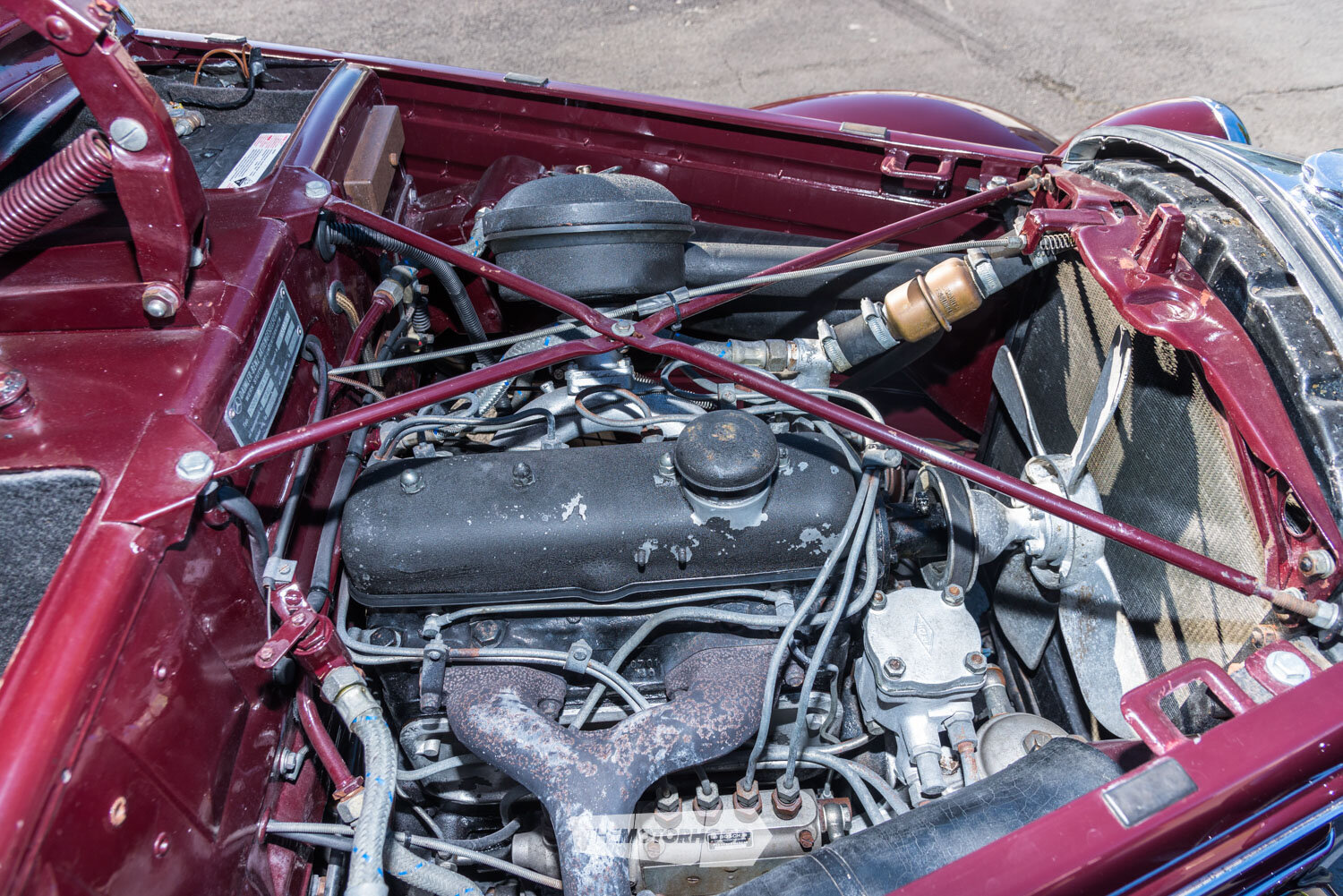

Mercedes-Benz 170 DS
Engine OM636 IV four-cylinder diesel
Capacity 1767cc, bore 75mm, stroke 100mm
Power 29W@3200rpm
Torque 101Nm@2000rpm
Compression ratio 19:1
Fuel Bosch diesel direct injection
Valves Eight, overhead valve
Transmission Four-speed manual, RWD
Suspension F/R double wishbone, coil springs with torsion bar/swing axle, double coil
Steering Worm and lever
Brakes Drum
Dimensions
Length 444cm
Wheelbase 284.5cm
Width 168.5cm
Height 161cm
Track F/R 131.5cm/143.5cm
Kerb weight 1275kg
Performance
0–100kph 56s
Top speed 100kph
This article originally appeared in New Zealand Classic Car issue No. 357

